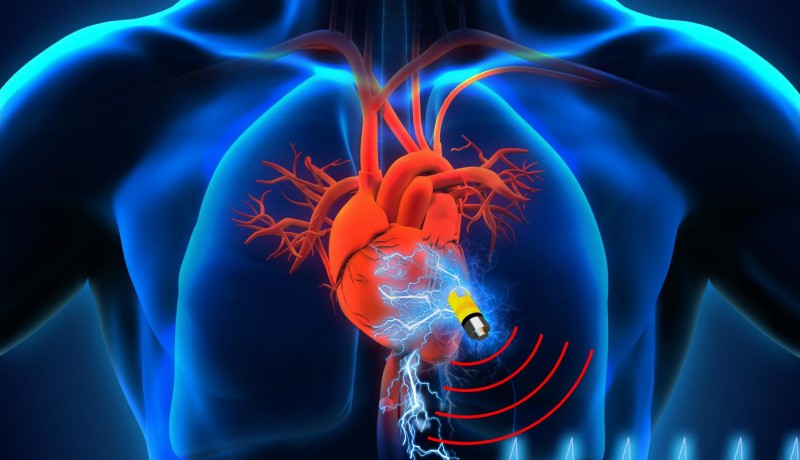Biological supercap
June 21, 2017
on
on

Researchers at the University of California in Los Angeles (UCLA) and the University of Connecticut, led by professors Richard Kaner and James Rusling, have developed a “biological supercapacitor” which utilizes ions naturally present in human body fluids. This supercapacitor is harmless to the living organism and can form the basis for pacemakers and other implantable devices that are able to work for a long time, possibly as long as the user’s lifetime.
Pacemakers (which counter various forms of cardiac arrhythmia) and other implantable devices have saved countless lives, but they are powered by conventional batteries that eventually become exhausted and must be replaced, which can be risky for the patient. In addition, batteries contain toxic materials that could be hazardous to the patient if they leak out.
The supercapacitor discovered by the researchers is charged with the aid of biological fluids (blood serum, urine, etc.) and works together with an energy harvesting device that converts body heat and motion into electrical energy which is stored in the capacitor.
Modern pacemakers are not much larger in diameter than a 2 euro, 2 pound or US 50 cent coin and 6 to 8 mm thick, with about half of their volume occupied by the battery. By contrast, the new supercapacitor is only 1 micrometer thick. It can store more energy than a lithium ion battery of the same size. The supercapacitor consists of graphene with modified human proteins as electrodes.
Pacemakers (which counter various forms of cardiac arrhythmia) and other implantable devices have saved countless lives, but they are powered by conventional batteries that eventually become exhausted and must be replaced, which can be risky for the patient. In addition, batteries contain toxic materials that could be hazardous to the patient if they leak out.
The supercapacitor discovered by the researchers is charged with the aid of biological fluids (blood serum, urine, etc.) and works together with an energy harvesting device that converts body heat and motion into electrical energy which is stored in the capacitor.
Modern pacemakers are not much larger in diameter than a 2 euro, 2 pound or US 50 cent coin and 6 to 8 mm thick, with about half of their volume occupied by the battery. By contrast, the new supercapacitor is only 1 micrometer thick. It can store more energy than a lithium ion battery of the same size. The supercapacitor consists of graphene with modified human proteins as electrodes.
Read full article
Hide full article



Discussion (0 comments)